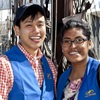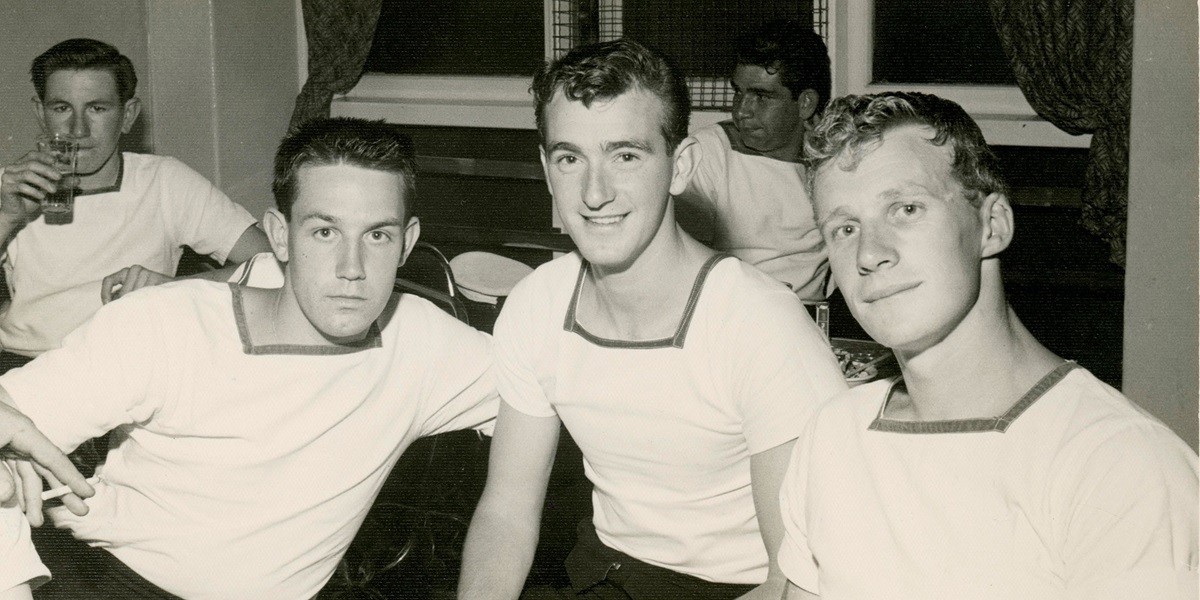
Raw reflections
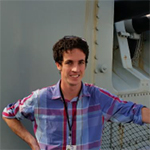
David O’Sullivan has volunteered at the museum since 2016. He focus has been recording oral histories. While completing his Masters in Museum Studies, David interned at the museum, assisting with the translation of exhibition labels into Mandarin for Wildlife Photographer of the Year.
So, what does collecting oral histories entail? And how does the museum use them?
1. The Volunteers' Oral History Project
It has been a humbling experience to be part of the Volunteers' Oral History Project. The honest narratives shared by the participants have entertained, shocked and enlightened me. I have gained a unique insight into what it was like to serve in the Royal Australian Navy (RAN) during the mid twentieth century.
“Everyone was woken up and stood on deck. It was freezing bloody cold. All cameras were confiscated, all draws on the ship had to be left open, and you weren’t allowed to talk to anyone while they were unloading the ship” - Ross Spirou, Merchant Seaman, on dockyard procedure in Shanghai, 1966.
When I began volunteering in 2016, I had a limited knowledge of Naval history, but I did have experience conducting radio interviews, so I was excited to help record the stories of the museum's volunteers who had served in the RAN. This was a rare opportunity to capture some diverse and uniquely personal stories, a cross-section of various Naval experiences from the 1950s-1970s.
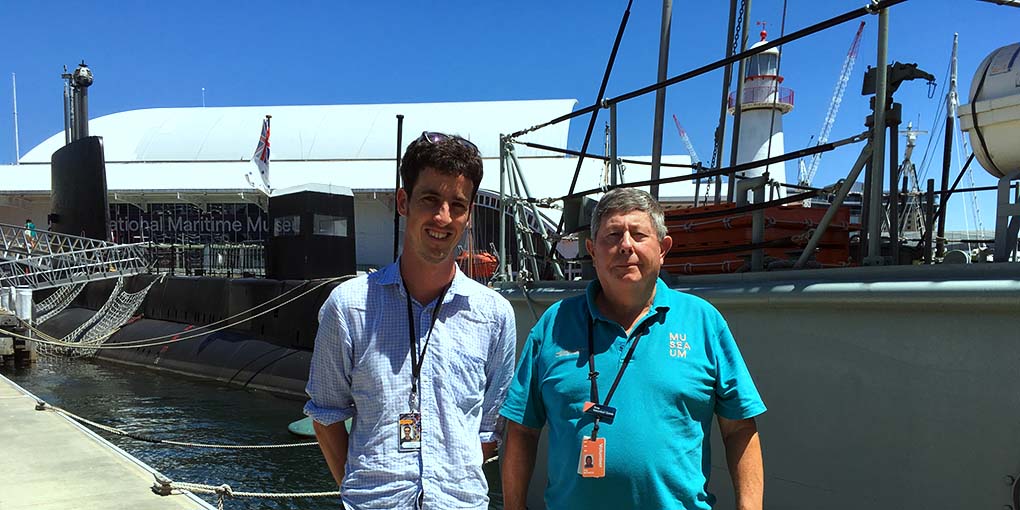
Volunteers David O'Sullivan and Tony Michaels, on the wharf. Both worked on oral histories which have been included in The Daring Ship. Image: ANMM.
2. When I was your age...
Initially I was a bit daunted by the project, but I soon found these conversations quite personal and informative. The interviews covered a range of topics from PTSD to the troublesome wildlife on certain overseas RAN bases.
“It’s not a wonderful thing to live with 310 young men in cramped uncomfortable conditions. While there is that ‘aura’ of going to sea, and in many ways it is exciting, it’s not a healthy place for people to be, mentally or physically” - David Simpson, Systems Artificer Apprentice HMAS Vampire 1963-1974
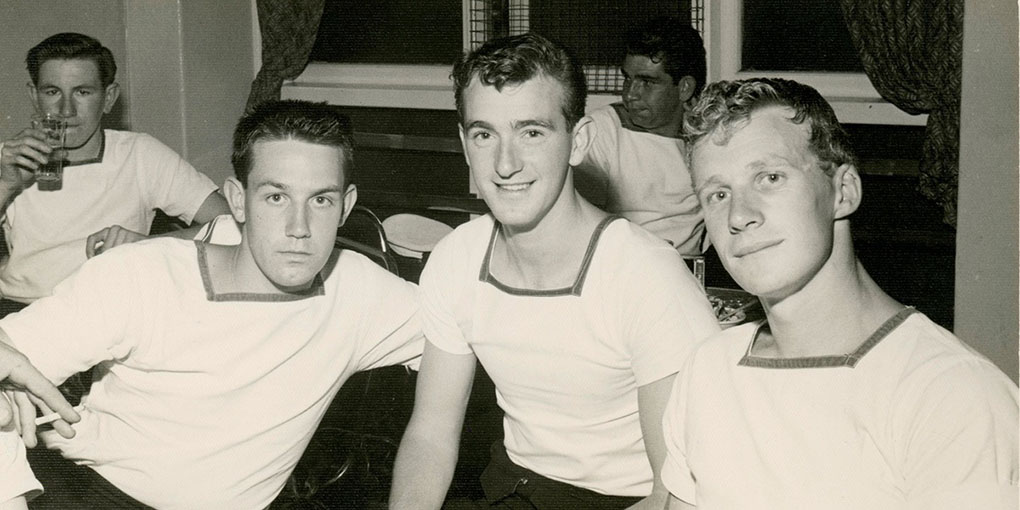
Members of HMAS Voyager's communication team relaxing at the Bognor Hotel in Melbourne 1963 after a trip to the Far East. Image: John Withers.
“…The crocodiles would come out of the water at night and bask on the warm concrete. If you had been up to the transmitting station on your pushbike and came back, you would have to pedal like mad to get around them” - John Withers OAM Radio Operator, on his time stationed on Manus Island
The project was also quite sobering as often the volunteer was recalling moments of their youth, situations from when they were my age. Had I been part of their generation I may have joined the Navy, especially when you consider that a number of people joined the Navy for vocational training. Liz Watts is one such individual, she was a telegraphist. She is still an advocate for the role of women within the Navy and proud of her service.
“I mentioned that I joined as a telegraphist. It was a hush-hush job. We received Morse. We speed typed. We were taught how to do crypto and coding. That was what we were being trained for. We didn’t go to sea. It wasn’t until about 1984 that women went to sea." – Liz Watts WRAN 1956-1959
3. Valuable stories
The most rewarding part of conducting these interviews was the opportunity to have an ongoing dialogue with the volunteers. I was particularly interested in how they looked back on their experiences. For some, a lifetime in the Navy unfortunately included unpleasant experiences and tragedy. The Volunteers' Oral History Project has had the positive impact of allowing a space for these individuals to tackle the more difficult issues surrounding their Naval service.
“Part of me coping with my PTSD was confronting it a bit. And there it was, it was that ship (the Vampire).’ - David Simpson, Systems Artificer Apprentice HMAS Vampire 1963-1974, explaining his primary reason for being a volunteer guide at the museum.
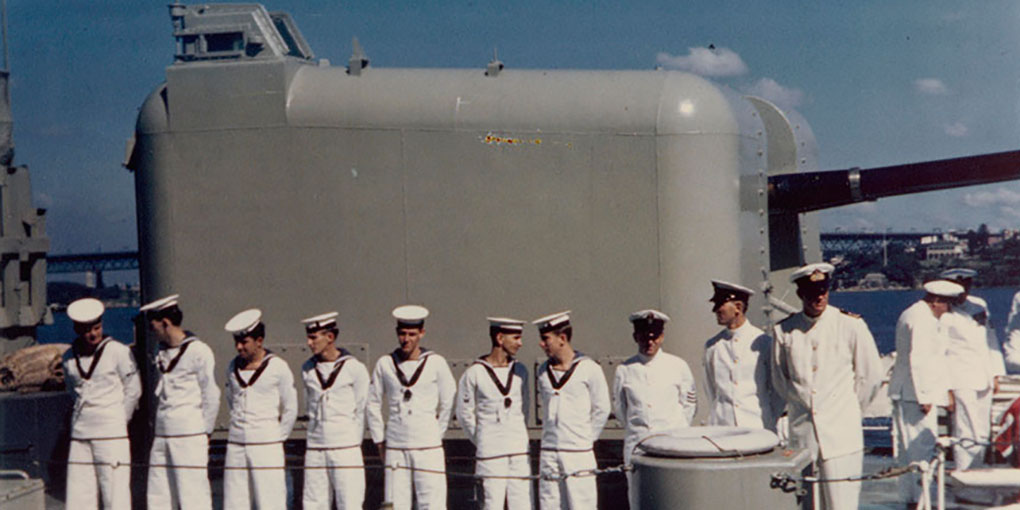
Crew aboard HMAS Voyager. Image: John Withers.
“We had just got off our home that had been sunk (HMAS Voyager), we had lost everything, and then we got sent to a Second World War ship that was in very bad condition. The rust was so bad on the hull that the forepeak of the ship would get filled with water at sea.” - Len Price Leading Seaman HMAS Voyager 1962-1964
Many of these conversations have the potential to be included in exhibitions on different historical events and subject areas. In fact, The Daring Ship exhibition commemorating fatal 1964 collision of HMAS Voyager (II)–HMAS Melbourne (II), directly uses material from these oral histories.
As personal and emotive historical narratives, I would like to see the Oral History Project grow further, unafraid of tackling difficult Naval legacies.
The Daring Ship is on now and commemorates the work and life of the crew aboard HMAS Voyager.
